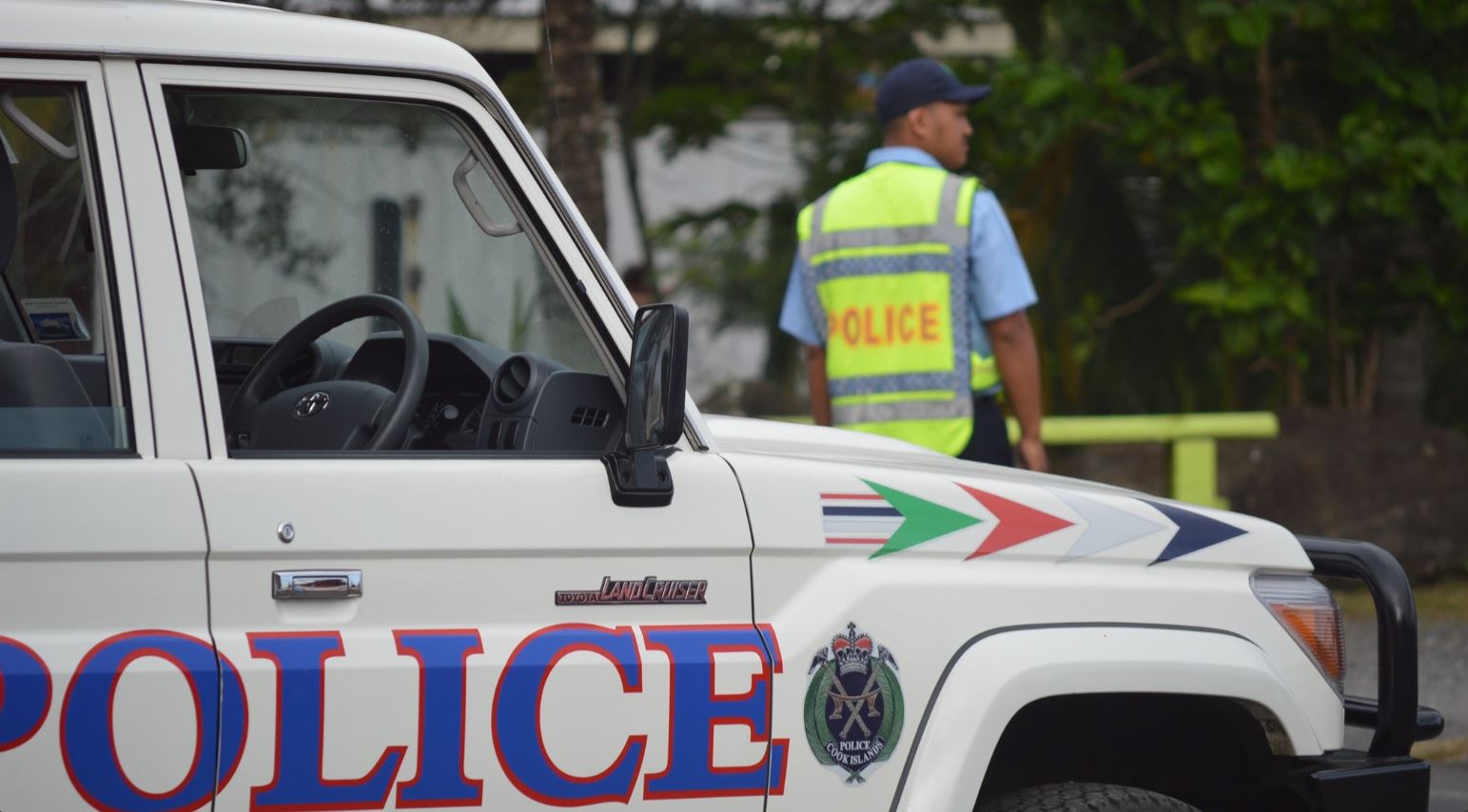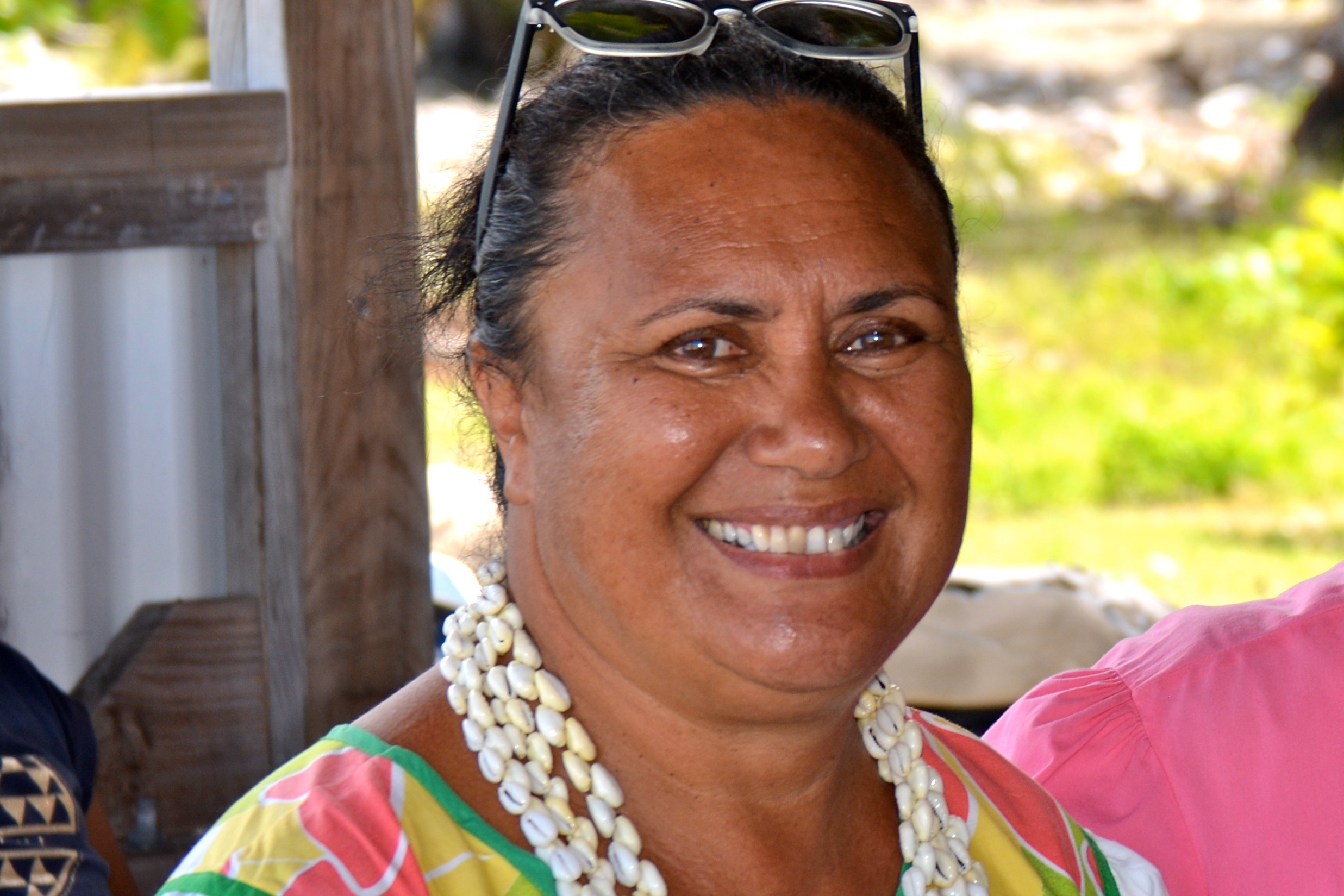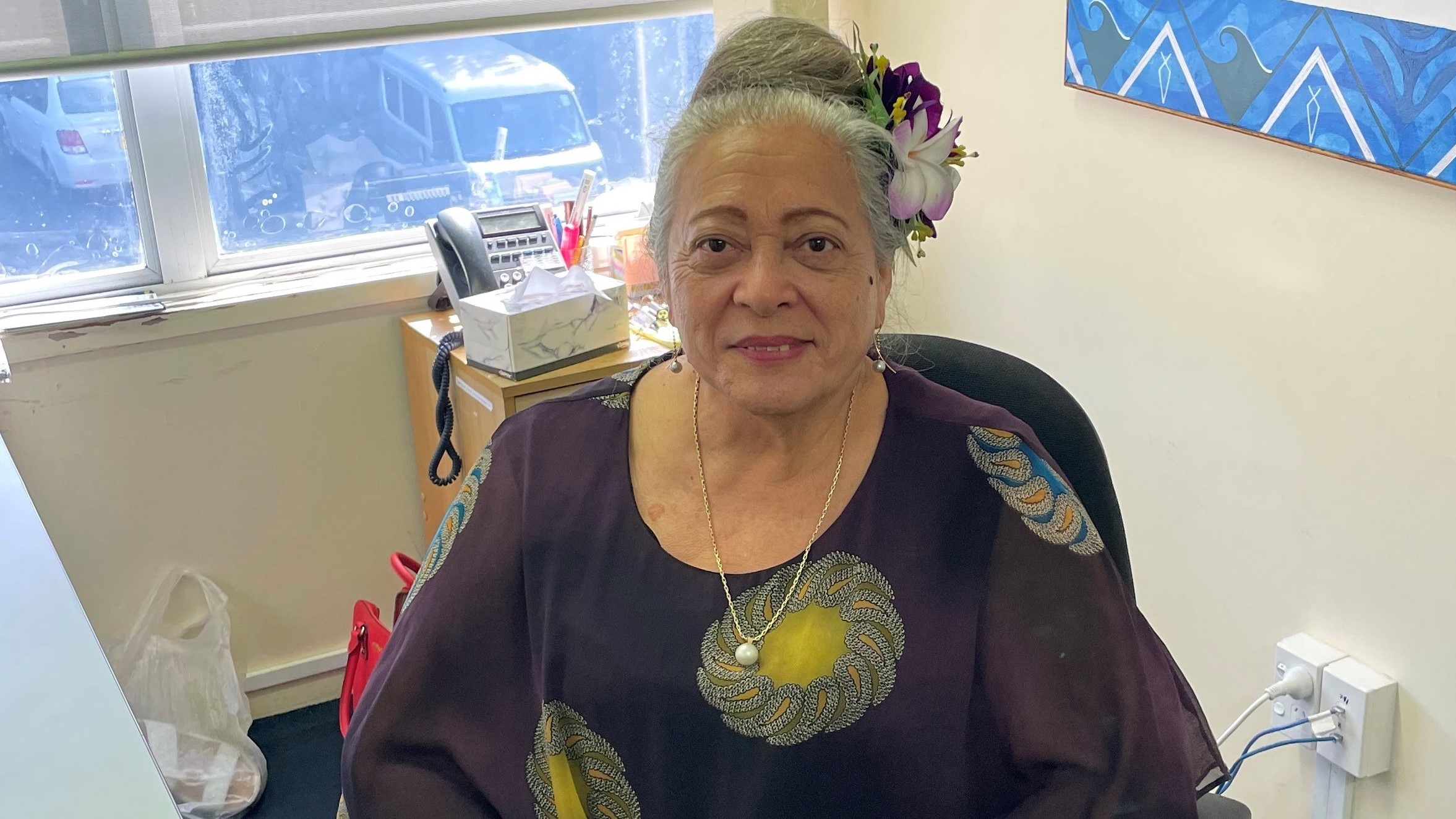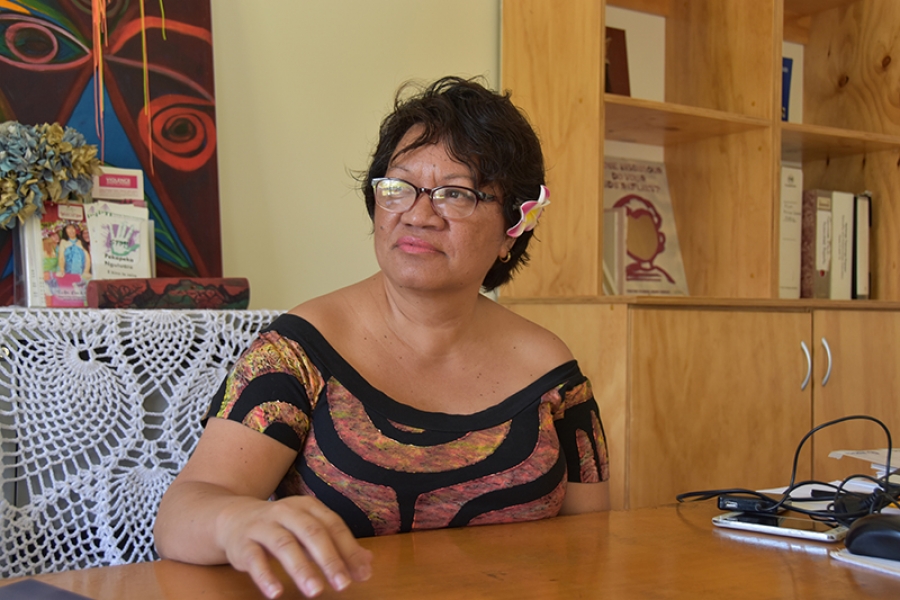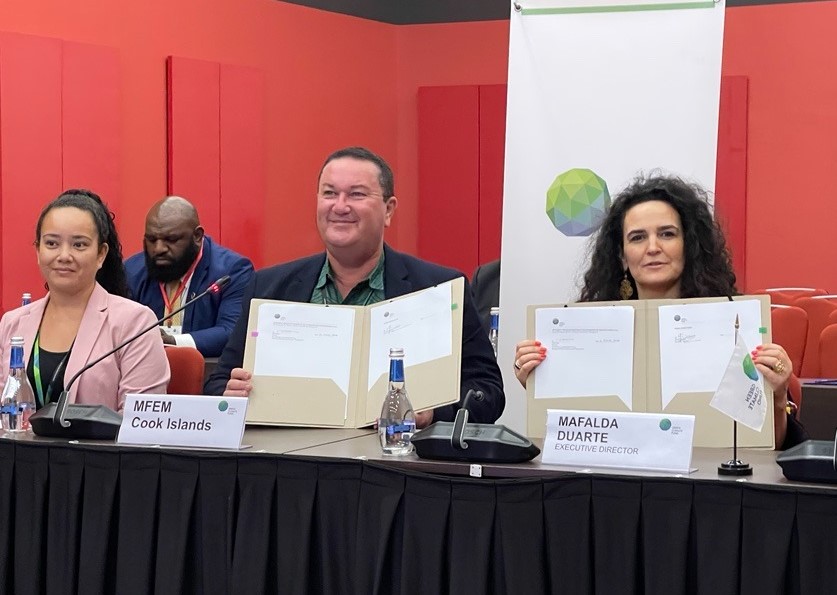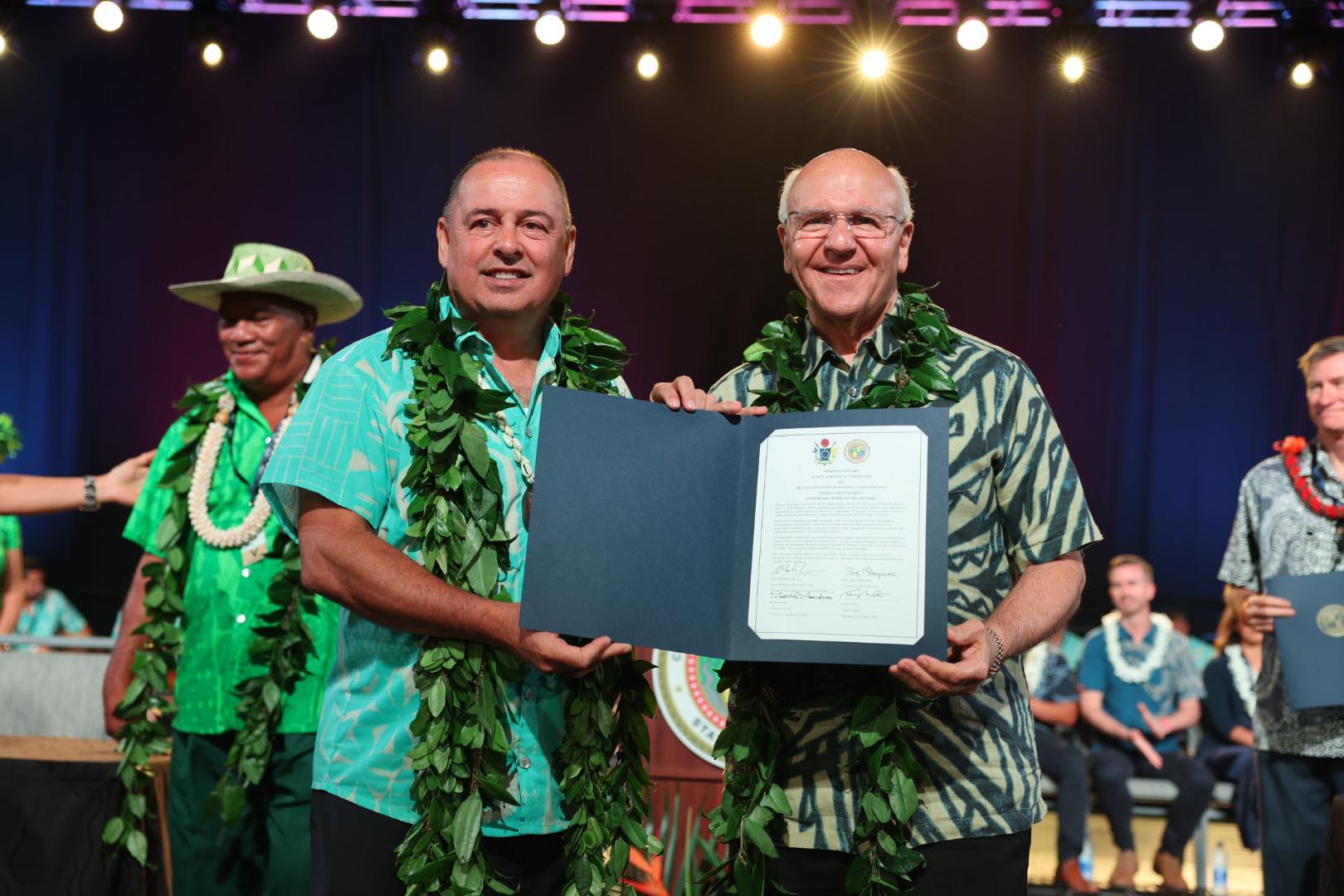Learning from experience – Australia’s aid legacy in Aitutaki
Saturday 28 August 2021 | Written by Supplied | Published in National, Outer Islands
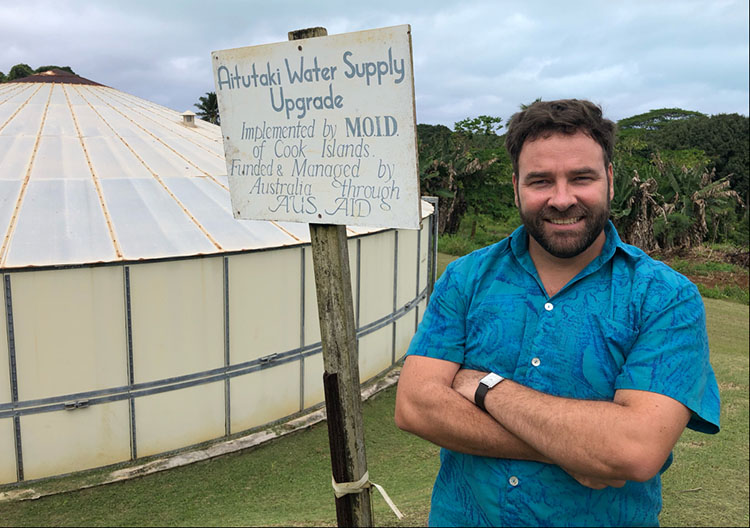
Australian High Commissioner to Cook Islands Dr Christopher Watkins viewing a water tank on Piraki hill in Aitutaki, built by Australia in 2000. SUPPLIED/21082730
Australia’s first resident High Commissioner to Cook Islands, Dr Christopher Watkins and his partner Dr Penelope Witt paid an official visit to Aitutaki earlier this month. Here he writes about the role Australia can play in helping the island, especially the young generation.
There is a huge water tank high on Piraki hill in Aitutaki which was built by Australia in 2000. The water system laid out all those years ago still supplies water to Aitutaki. Down the road, the Marine Research Centre was opened in 1990, again funded by Australian Aid.
The Research Centre is dedicated to restoring clam stocks in the lagoon, and building a sustainable export market. We discovered that many of the lagoon’s giant clams are Aussies, bred from Queensland stock. Ministry of Marine Resources Staff are thinking about how the research centre can play a bigger role, including by establishing an education centre for Aitutaki’s students and visitors on how to interact with the changing environment.
I had the pleasure of meeting some of those students last week. Penny and I spoke at the Araura College, and presented football equipment to two public primary schools. The students of Aitutaki are bright, curious and engaged. They sing powerfully in the wonderful traditional style. I encouraged the College students to think of themselves as future marine scientists, future prime ministers (particularly the young women) and future high commissioners to Australia. They will inherit not just their beautiful island, but the lagoon on which it depends and our shared inheritance, the Pacific. This generation will face greater challenges than any before.
So how can Australia help that generation to make the choices they need to make? Education will be key. Young climate scientist, Charlee Mclean, is studying at James Cook University in Queensland right now, developing the world class expertise Cook Islands will need. She’s one of a long line of Cook Islanders to have honed their understanding of the ocean in that university, including two former secretaries of the Ministry of Marine Resources.

Dr Christopher Watkins and his partner Dr Penelope Witt with Aitutaki students. SUPPLIED/21082731
We will also need young people who can lead technological change. Like in Cook Islands, technology is at the heart of the renewable revolution occurring in Australia. Since 2017, more than $35 billion has been invested in renewable energy in Australia. We are deploying new wind and solar at ten times the global average per person. We have the world’s highest uptake of rooftop solar – one in four households have rooftop solar systems. In 2019, Prime Minister Morrison pledged $500 million over five years from 2020 to help Pacific nations invest in renewable energy and and disaster resilience.
And of course, we learn from Cook Islands’ experience. The success of Cook Islands in moving to renewable energy has lessons for regional and remote Australian communities. The milkfish ponds in northern Cook Islands, which provide an alternative source of food in the cyclone season, are a great example of how Cook Islanders have been planning for disasters for centuries. As weather patterns change, we will need to help each other adapt.
On One Foot Island in the beautiful Aitutaki lagoon there is a row of Tamanu trees planted by Pacific leaders from across the region in 2014. Unfortunately Prime Minister Julia Gillard, had been called back to Australia to deal with the deaths of a number of Australian soldiers in Afghanistan (a tragic parallel with this week’s events in Kabul). It was a moving moment to see those trees growing proudly in that beautiful but vulnerable place. I’m hoping a future Australian Prime Minister can one day finish the job by planting a mahogany tree on One Foot Island. We will need to work together to make that happen.
Everyone we met, from the wonderful Pakipakitai disability community to the congregation of the CICC Church, and of course the 40 Australian citizens who live and work on the island, told us something different about beautiful Aitutaki and its links to Australia – from the Kuki Anzacs who fought alongside Aussies, to the thousands of Australians who visit every year, and can’t wait to return when it’s safe to do so. Meitaki atupaka for your welcome. Wave Kia Orana to those Aussie clams for us.
















